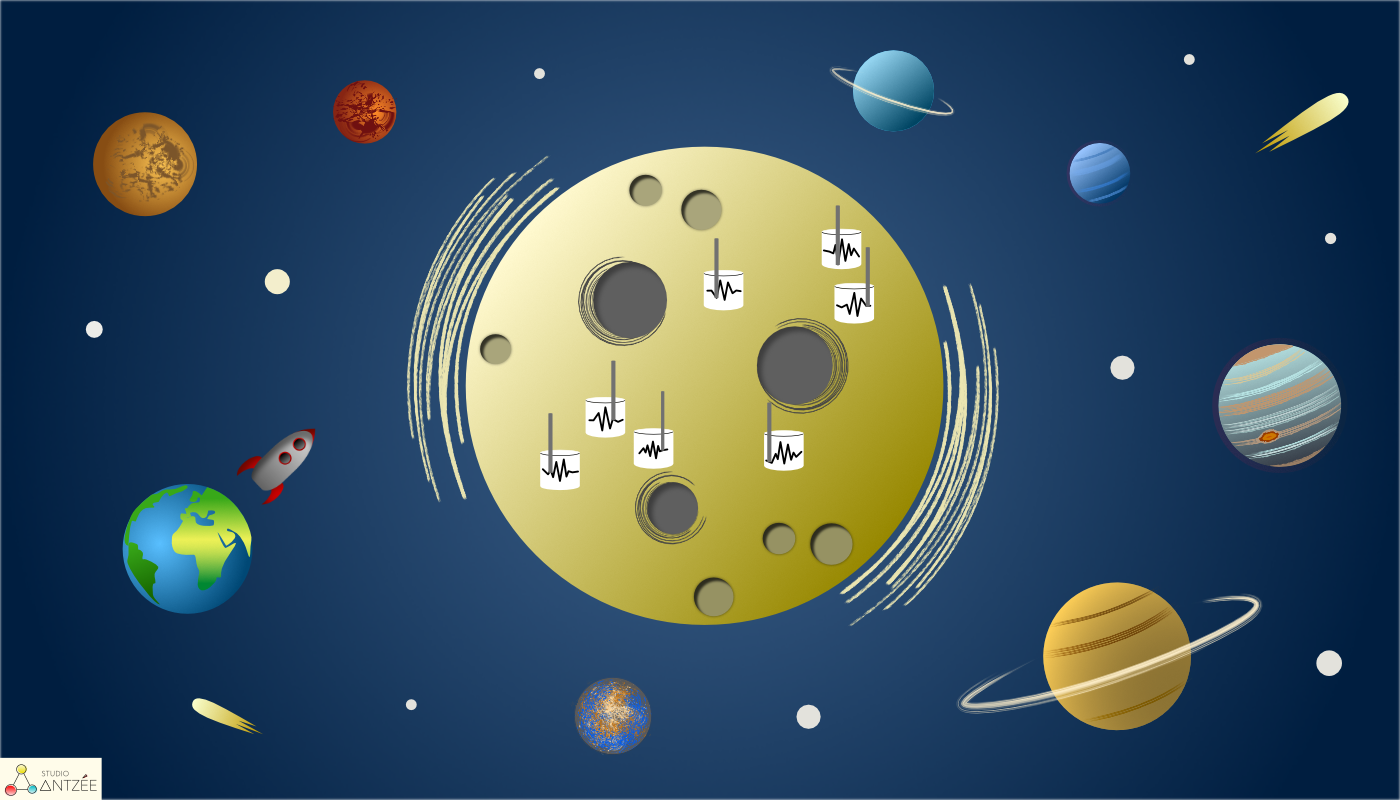The Mystery of Moonquakes: What causes them & Why they matter
This article explores the mystery of moonquakes and seismic secrets of the lunar system that vary from those that occur on Earth. Geoscientists understand how earthquakes happen. The earth’s crust which is 22 miles deep on average is divided into continental and oceanic plates.
These plates push against one another as molten rock moves through the mantle (earth’s second layer). Pressure builds up at the sites where tectonic plates collide over decades and centuries until the plates split and the pressure is released. It resulted in shockwaves spreading in all directions in the form of Earthquake.

However, things are not quite the same on the moon. Though shocks can occur on the lunar surface, scientists believe the causes are very different from those that cause quakes on Earth. So, what exactly are moonquakes, and why do they occur?
A moonquake is a type of seismic tremor that happens on the moon, shaking its surface, usually due to the unexpected release of seismic waves. These quakes are normally weaker than Earthquakes, but they stay longer.
The mystery of moonquakes resolves with various factors causing it. One of them is meteoroids that collide with the moon’s surface. This collision results in moonquakes. However, lunar structure, temperature, and gravitational attraction of Earth also cause moonquakes.

Francesco Civilini is a planetary scientist at Goddard Space Flight Center of NASA. He stated there are no active plate tectonics on the moon. Hence, moonquakes occur as a result of different processes.
There are four types of moonquakes: Shallow, Deep, Meteoritic, and Thermal moonquakes.
- Shallow moonquakes (up to 125 miles in depth): occur due to the presence of inside magma on the moon. The magma is shrinking slowly over time due to its cooling at the central core of the moon.
- Deep moonquakes (between 500 and 750 miles): occur due to gravitational interaction between the Earth and Moon’s interior. The moon orbits the Earth in an elliptical orbit, it is closer to Earth at center points in its orbit and away from the Earth at others.
It causes gravitationally induced expansion and compression of the moon’s body resulting in moonquakes.
- Meteoritic moonquakes: occur due to the strike of meteorites with the moon’s surface.
- Thermal moonquakes: occur due to the expansion (spreading) and contraction (shrinking) of the Moon’s crust caused by extreme temperature variations.

Click here to read updates on Jupiter’s Moon Europa shows enough oxygen for 1 million humans
However, moonquakes are significant for several reasons. At first, they provide crucial information about the underlying structure and composition of the Moon. It allows scientists to understand in a better way the geological evolution and history of the Moon.
Secondly, moonquakes help to determine potential dangers for future lunar exploration trips and lunar colonies. As seismic activity may have an impact on infrastructure and stability.
Furthermore, moonquakes provide a unique chance to compare and contrast seismic activity on Earth and other planets. Hence, resolving the mystery of moonquakes provides a better knowledge of planetary geology and seismic processes throughout the solar system.
Read More:
- Sea creature turns into a baby when it is stressed out showing time travel
- Realme Narzo 70 Turbo 5G launch date, features, specifications & price
- European Space Agency printed 3D metal part in space for first time
- Earth’s mysterious Alaska triangle where over 20,000 people disappeared
- Philips Hue launched a new smart lighting solution for kitchen
- NASA to launch life-searching spacecraft to Jupiter’s moon Europa
Share this content:










Post Comment